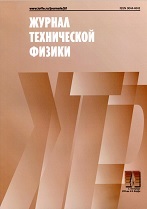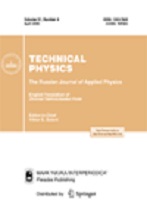|
This article is cited in 1 scientific paper (total in 1 paper)
Gases and Fluids
Competition between bluff body vibration modes in an air flow
A. N. Ryabinin, R. V. Symigirilov
Saint Petersburg State University
Abstract:
A vibration model of a body with two degrees of freedom has been developed based on available mathematical models that describe the vibration of a bluff body with one degree of freedom in a gas flow. For an elastically fixed body, equations of transverse translational vibrations and rotary vibrations about an axis that is normal to the velocity vector of an approach flow have been derived. Using the Krylov–Bogoliubov method, these equations have been reduced, in a first approximation, to equations for slowly varying vibration amplitudes and frequencies. It has turned out that differential equations that were derived for the squares of dimensionless amplitudes of translational and rotary vibrations coincide with the well-known Lotka–Volterra equations, which describe competition between two animal species eating the same food. The coefficients of the equations have been found to depend on approach flow velocity. The model has been verified using a bridge segment model in a wind tunnel as an example.
Keywords:
translational and rotational vibrations, air flow, bluff body.
Received: 04.12.2020
Revised: 04.12.2020
Accepted: 08.12.2020
Citation:
A. N. Ryabinin, R. V. Symigirilov, “Competition between bluff body vibration modes in an air flow”, Zhurnal Tekhnicheskoi Fiziki, 91:5 (2021), 758–763; Tech. Phys., 66:6 (2021), 787–792
Linking options:
https://www.mathnet.ru/eng/jtf5010 https://www.mathnet.ru/eng/jtf/v91/i5/p758
|


| Statistics & downloads: |
| Abstract page: | 55 | | Full-text PDF : | 26 |
|





 Contact us:
Contact us: Terms of Use
Terms of Use
 Registration to the website
Registration to the website Logotypes
Logotypes








 Citation in format
Citation in format 
